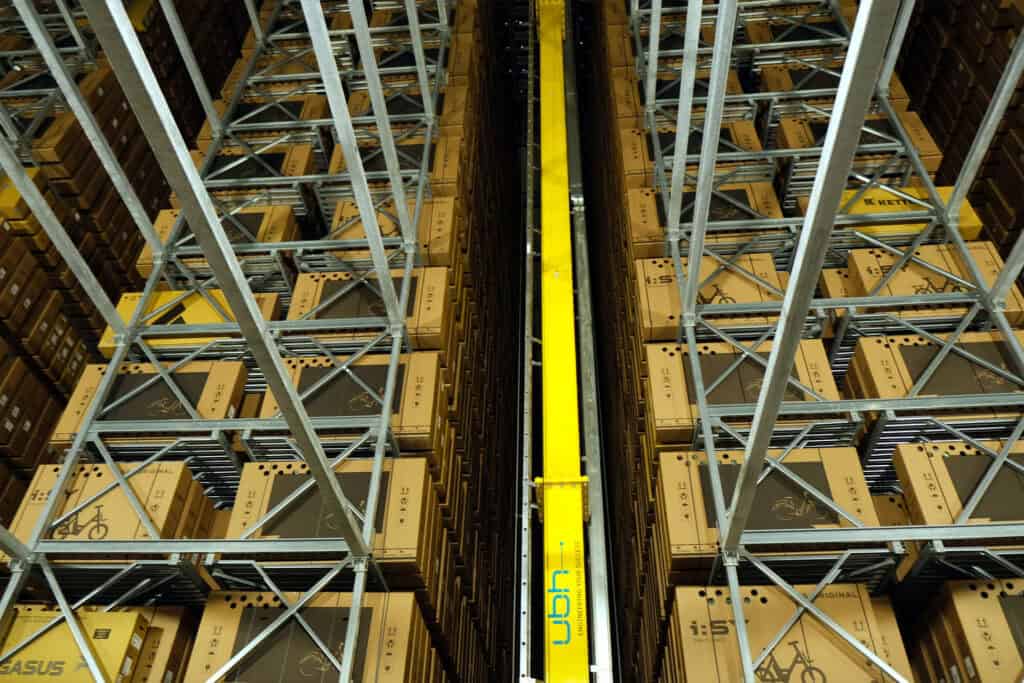The bicycle industry has been battered by storms since mid-2022, with very little post-storm sun. How do Taiwan-based suppliers see the current state of the industry, and do they see any signs of the tide turning?

Two-and-a-half years ago, the pandemic-induced bicycle bonanza came to a screeching halt. The sudden drop in consumer sentiment and demand in core markets were caused by increases in the cost of living and rising uncertainty following Russia’s full-scale attack on its Ukraine. While this conflict is ongoing, seemingly without an end in sight, the escalation of the conflict in the Middle East following the attack of Hamas on Israel in October 2023 has further added to the negative sentiment. Foul weather in spring and throughout 2024 in wide parts of Europe did little to speed up the sell-off of overstock.
Giant Group’s spokesperson Ken Li confirms this observation: “Inventory in the U.S. and Europe is still the main challenge. The situation is improving, however. Apart from actively reducing inventory, Giant Group is also proactively optimizing sales channels, focusing on more innovative and sustainable products and services, and leveraging digital marketing to enhance customer engagement.” As the president of assembly specialist FJ Manufacturing, Fritz Jou adds: “We have seen some improvements in 2024, but the core challenges—inventory adjustments, cautious demand and supply chain disruptions—remain. However, there is a sense of stabilization, and we are seeing a more balanced market compared to the volatility of 2023.”
Another factor is adding to the uncertainty. With Donald Trump back in the White House, a return to protectionism and escalating trade conflicts as an attempt to force negotiations are very likely. While this and the decision of the European Commission to extend the EU’s anti-dumping tariffs on e-bikes made in China by another five years are of particular concern for Beijing, these factors are likely to have a significant impact on the entire supply chain of the bicycle industry. “Shifting manufacturing out of China in the near term is not feasible, as China remains the global hub for bicycle production. Keep in mind 85 percent of the e-bikes and conventional bicycles imported to the United States have been produced in China,” Jou explains.

As the slump in demand persists and the drop in turnover outpaces cost savings, many companies see their capital reserves getting depleted. Some companies had been investing heavily to expand their production capacity early in the pandemic, relying on money borrowed from banks at zero-percent interest rates. When federal banks started to raise interest rates to stave off inflation, the entire calculation got out of balance. This was the core reason why Advanced, an ambitious German e-bike manufacturer relying on reshoring and assembling close to the markets, went out of business in late 2024. With iconic Canadian brand Rocky Mountain, the main issue was that its line-up is very much focused on mountain bikes without electric assistance, a segment hit hard by the current downturn.
There are some indicators for improvement as well, according to KMC Chain’s Senior Manager for Sales and Business Development Adrian Bleiler: “Some things have started to remediate. First, aftermarket sales for chains, cassettes, tires and other service parts have improved as consumers were choosing to repair their bikes versus buying new ones. Second, conservative ordering and sales discounts have led to bicycle inventory reductions. The latter is overall positive but also led to some bike stock being left in the market that may be difficult to liquidate because of undesirable size, color or outdated technology.” Bleiler expects the worst to be behind for the bicycle industry and the market to be on the road to recovery: “We can finally see the light at the end of the tunnel.”

Some segments of the market have already seen a turn of the tide, as Formula Hub’s Public Relations Manager Brenda Yu confirms: “The rebound has set in, with high-end products starting to increase in particular, both in terms of volume and pricing. Due to the number of ongoing projects and new customers, we expect to increase sales starting in Q3 2025, with high-end road disc and gravel disc wheels in high demand and e-bike wheels in high demand in both Europe and China.” Still the recovery needs to pick up pace to be of real significance, says Velo Enterprise’s CEO Ann Chen. “It seems that the orders for 2024 have been growing very slowly. This is probably because the market still has many uncertainties. We truly hope the market can return to normal as soon as possible,” she said.
As statistics for exports from Taiwan, the quarter results of the Giant Group and imports into the EU and the United States illustrate, the decrease in Taiwan’s exports has been stronger than that of the sales of bicycles in various markets. Thus, inventory levels indeed are getting lower, albeit at a much slower pace and a much lower margin than the industry would like. While North America and Europe as the classic core markets for mid- to high-end bikes have been facing considerable problems since mid 2022, another market has shown an entirely different dynamic. Giant Group’s Ken Li explains: “Over the past three years, our Chinese market has seen a substantial growth, particularly in the high-end and road bike categories. We remain optimistic about the upgrading and transformation of the Chinese market.”
The competition within China is stiff however, with ambitious domestic manufacturers looking to up their game and launch brands of their own. One prominent example is XDS Bicycles that has become a co-sponsor and the bicycle supplier of the World Tour team XDS Astana Team with its brand X-Lab. Of course, Beijing could arbitrarily slap tariffs on made-in-Taiwan road bikes to give domestic offerings an additional advantage. But as many Taiwanese brands own factories within China, that would have a very limited effect. Still it remains to be seen if this demand for upper-end road bikes in China will be lasting. KMC Chain’s Adrian Bleiler thinks that business opportunities in China are past their peak in this regard: “Demand for bikes and components, specifically in the road category, in China has been exceptional but it is already in a downward trend overall.”

Apart from keeping staff aboard and paid despite the drastic downturn in orders and the challenge to balance costs and much lower turnovers, there is another worrying prospect from the bicycle industry’s perspective. When one highly specialized company goes bust, the entire supply chain may be impacted and the industry could not ramp up production to cover a rise in demand. Do not be surprised to hear of more acquisitions and mergers in months to come as large players try to secure their supply chains and prevent them from derailing. Since the bicycle industry relies on the U.S. dollar to do business, the current depreciation of this currency relative to the Euro is bound to further complicate things, adding to the challenges that have root causes out of the industry’s control. As Wellgo’s Head of Sales Jennifer Chen states: “Right now the political issues around the world would be the most challenging thing to us.”
So, is the tide about to turn? The industry managers contacted by Show Daily were cautious as Fritz Jou’s assessment goes to show: “Predicting 2025 is challenging given global economic uncertainties and potential tariff developments, particularly in the United States. However, if the current stabilization trend continues and inventory levels normalize, we expect a moderate recovery. Much will depend on consumer confidence, policy developments and supply chain dynamics.” Adrian Bleiler would also not hold his breath just yet for a recovery to set in: “The first half of 2025 will be challenging for most as we don’t know the state of demand yet with the season yet to begin in spring. Consistent inventory reduction and targeted promotions will lead to healthy sales in the second half and recovery, with 2019 as a baseline, in some markets and recovery in 2026 in others.
Topics in this article
More news and updates from The Show Daily team
- Small Wheels, Big Footprint: Eurobike Expands Ecomobility Focus
- Greenway Battery: A Focus on Product Longevity and Smart Sustainability
- Seven Things to Expect from Eurobike 2025
- Kenda Tires: From Local Manufacturer to Global Player
- E-Bike Motors 2025: Innovation and Competition Drive the Market Forward


